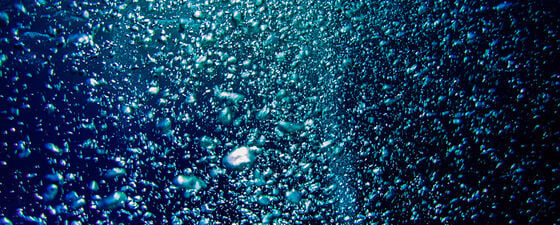 A limnic eruption could include methane, CO2 and H2S. Source: Shutterstock.The well-known British geologist and Dean of the Royal School of Mines (Imperial College) in the 1940s is credited with the quote: “I suggest the best geologist is he who has seen the most rocks.” Unfortunately, these days students and practitioners of geology do not get out into the field to study outcrop as much as they did in times past. Even contact with real physical samples seems to be in decline in this virtual world of ours.
A limnic eruption could include methane, CO2 and H2S. Source: Shutterstock.The well-known British geologist and Dean of the Royal School of Mines (Imperial College) in the 1940s is credited with the quote: “I suggest the best geologist is he who has seen the most rocks.” Unfortunately, these days students and practitioners of geology do not get out into the field to study outcrop as much as they did in times past. Even contact with real physical samples seems to be in decline in this virtual world of ours.
Two of the articles in this issue address physical rock samples, though very differently. Kirstie Wright and Henk Kombrink have been rescuing unwanted North Sea core and saving it from landfill. It seems tragic that this resource that has cost UK operators vast sums over many decades to acquire, is now superfluous to requirements. I have no doubt much of it still has huge value as a teaching resource and for future activities such as carbon capture and storage evaluation. The industry should credit and support this endeavour.
The second article details how physical samples are being made more accessible to users by making them ‘virtual’. Well cuttings have been the last frontier of subsurface rock digitalisation and now governments who take responsibility for national rock archives are working with a UK-based company to add incremental value to the samples in their custody. With renewed interest in their suitability for new machine learning methodologies and a greater focus on bringing all data types into a seamless digital environment, it is likely that more large-scale cuttings digitalisation projects will commence worldwide.
I was ignorant of the magnitude of the dangers posed by lake overturns or limnic eruptions until I learnt about a decades-long effort to develop the methane resource in Lake Kivu, in the African rift. Although these events are relatively rare, they can be truly catastrophic, as witnessed in 1986 when Lake Nyos in Cameroon released around 80 million m3 of CO2 and killed over 1,800 people. Philip Morkel’s article about the danger lurking in the highest of Africa’s Great Lakes provides a fascinating insight into how providing energy to the settlements around this beautiful lake could also protect the inhabitants from future catastrophe. A win-win situation not commonly attributed to natural resource development.




